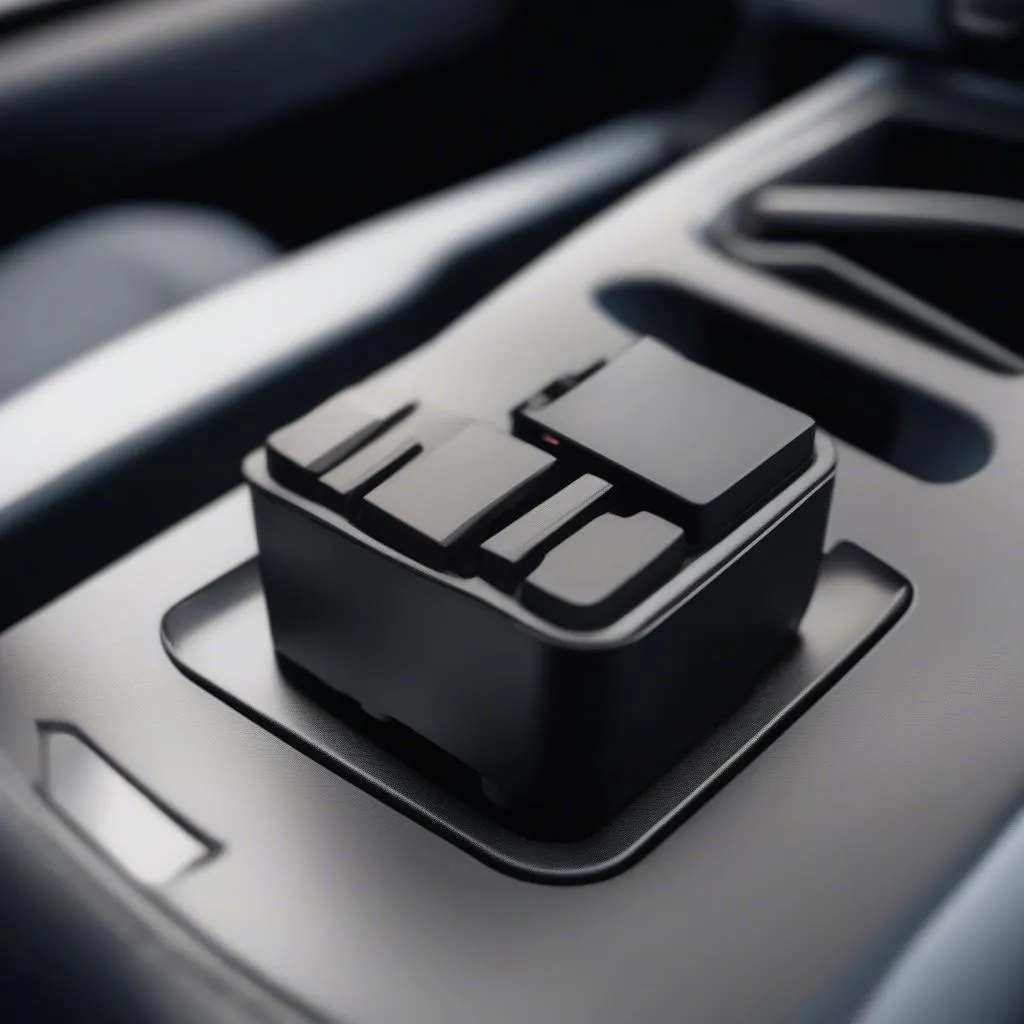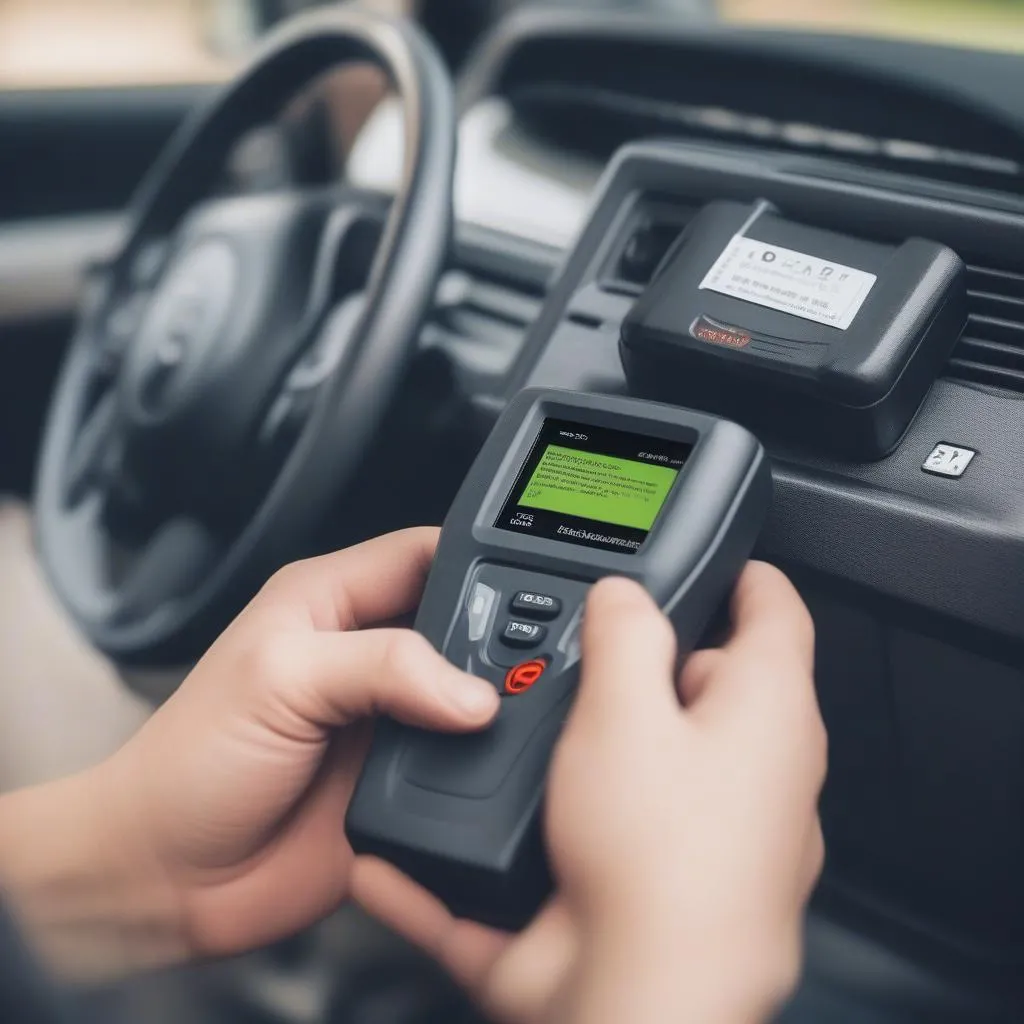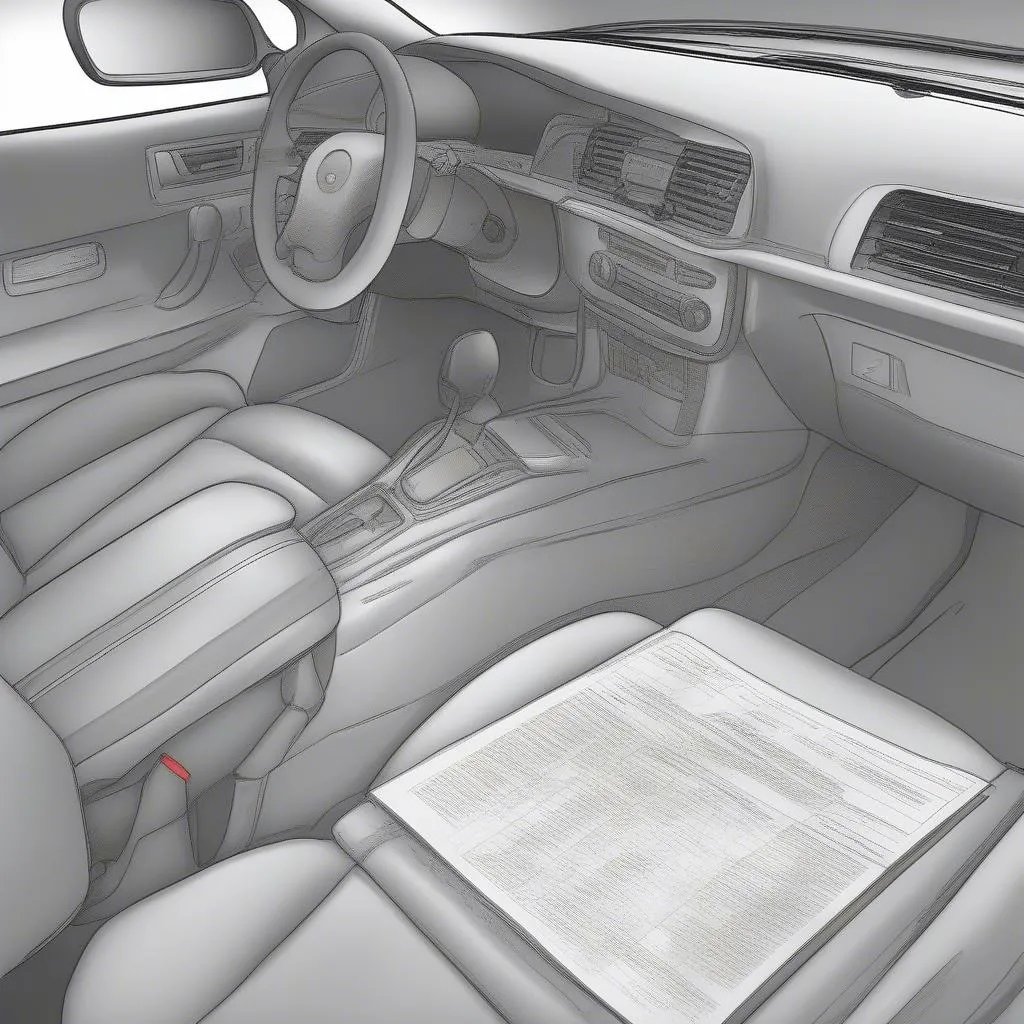Have you ever found yourself stranded on the side of the road, engine light flickering, and no idea what’s going on? Maybe you’re a car enthusiast who wants to delve deeper into your vehicle’s performance and diagnostics. In both cases, the OBD II port becomes your secret weapon – a gateway to understanding your car’s health and potential issues.
But the question remains: where exactly is this mysterious OBD II port hiding?
Understanding the OBD II Port: A Car Owner’s Lifeline
The OBD II port, short for On-Board Diagnostics II, is a standardized connector found in most gasoline-powered vehicles manufactured after 1996 in the United States and 2001 in Europe. It’s like a small window into your car’s internal workings, providing access to a treasure trove of data that can help you diagnose problems, monitor performance, and even increase fuel efficiency.
What can you do with the OBD II port?
- Diagnose engine problems: The OBD II port is your go-to tool for understanding why that pesky check engine light keeps flashing. It can tell you everything from a faulty oxygen sensor to a clogged catalytic converter.
- Track vehicle performance: You can use the OBD II port to monitor parameters like engine speed, fuel consumption, and even vehicle speed. This is a boon for performance enthusiasts who want to track their vehicle’s efficiency and optimize its performance.
- Improve fuel economy: By analyzing data from the OBD II port, you can identify areas where you can improve your driving habits and reduce fuel consumption.
Where is the OBD II Port Located?
The exact location of the OBD II port can vary depending on the make and model of your vehicle. But in general, you’ll find it somewhere within the driver’s compartment, typically within easy reach. Here are some common locations:
- Under the dashboard: This is the most common location for the OBD II port. You might find it near the steering wheel, under the center console, or near the fuse box.
- Beneath the steering column: Some vehicles place the OBD II port directly beneath the steering column, easily accessible with a quick glance.
- Near the driver’s side knee: Some car manufacturers prefer a more discreet placement, positioning the OBD II port near the driver’s side knee, usually hidden by a small panel.
Searching for the OBD II Port: A step-by-step guide
If you’re unsure where your OBD II port is located, follow these simple steps:
- Consult your owner’s manual: This should be your first point of reference. The owner’s manual will typically specify the exact location of the OBD II port for your specific vehicle.
- Look for a rectangular connector: The OBD II port is a 16-pin rectangular connector. If you’re searching in the driver’s compartment, look for a plug that resembles a telephone jack but with a wider opening.
- Use your car’s fuse box diagram: If you’re still stumped, consult your car’s fuse box diagram. The diagram will usually indicate the location of the OBD II port, sometimes labeled “OBD II” or “DLC” (Data Link Connector).
Examples:
- Volkswagen Golf: The OBD II port is located under the dashboard, to the left of the steering wheel.
- Toyota Camry: You can find the OBD II port under the dashboard, near the driver’s side knee, covered by a small panel.
- Ford F-150: The OBD II port is located in the driver’s side footwell, under the dashboard.
Tips for Using the OBD II Port:
- Use a compatible OBD II scanner: Not all scanners are created equal. Some may only read basic engine codes while others offer more advanced diagnostics and data logging. Make sure your scanner is compatible with your vehicle’s protocol and data format.
- Stay away from cheap knock-offs: It’s tempting to go for the cheapest OBD II scanner available, but this could end up costing you more in the long run.
- Protect your OBD II port: The OBD II port is exposed to the elements, so it’s essential to keep it clean and free from dust, dirt, and moisture.
Frequently Asked Questions:
- Can I use the OBD II port to reprogram my car’s computer? While some OBD II scanners offer basic reprogramming capabilities, they are not meant for full-fledged reprogramming. For major changes to your vehicle’s computer, you need to consult a qualified mechanic or dealership.
- What happens if I disconnect the OBD II port? Disconnecting the OBD II port while the engine is running can result in a loss of power, while disconnecting it while the engine is off should not cause any issues.
- What is the difference between OBD I and OBD II? The OBD II standard replaced the older OBD I standard, offering more comprehensive diagnostics and a standardized connector. Most vehicles manufactured after 1996 in the US and 2001 in Europe use the OBD II standard.
Want to learn more?
- Check out our blog post on [link to related article] for a comprehensive guide to using an OBD II scanner.
- Visit our website: [link to website] to explore more articles on car maintenance and repair.
Ready to take control of your car’s diagnostics?
Don’t hesitate to contact us at WhatsApp: +84767531508 We can help you choose the right OBD II scanner for your vehicle and offer expert advice on car maintenance and repair.
 Obd Ii Port Location" width="1024" height="1024">OBD II Port Location
Obd Ii Port Location" width="1024" height="1024">OBD II Port Location
 OBD II Scanner
OBD II Scanner
 Car Owner's Manual
Car Owner's Manual
Remember, with the right knowledge and tools, you can empower yourself to understand your car better and save money on unnecessary repairs.